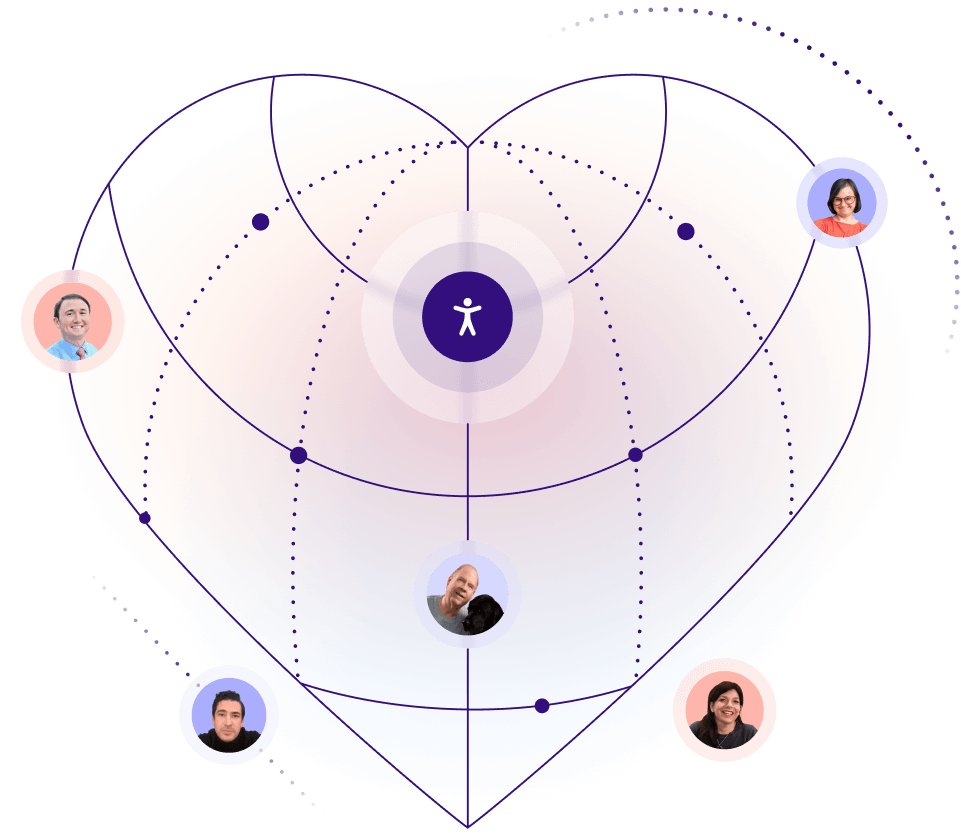An estimated 1.3 billion people worldwide experience significant disabilities, according to the World Health Organization. AI-powered tools are quickly becoming essential for creating more accessible workplaces, whether transcribing meetings and composing emails or describing images and converting voice to text.
In the United States, many of these innovations are helping companies meet the standards of the Americans with Disabilities Act (ADA), which requires employers to ensure accessibility in employment, transportation, public accommodations, and communication for employees.
However, the rapid rise of AI has also presented challenges, as many AI tools are far from perfect. Identified issues range from Slack messages deemed "robotic" to PDF summarization tools providing "completely incorrect answers" and AI programs introducing errors when generating content. In a 2023 study from the University of Washington, researchers noted that generative AI could have a wide variety of uses related to improving accessibility, but found concerns around "verifiability, training data, ableism, and false promises."
To further understand what AI means for people with disabilities in the workplace, we at accessiBe looked at how businesses are using AI-driven models to increase accessibility and what limitations they still face.
AI is changing many aspects of the worker experience
From recruitment and onboarding to daily tasks like meetings and emails, AI technologies are helping companies become more productive and efficient while offering greater accessibility to people with disabilities.
In hiring, tools like Workable and hireEZ claim AI technologies help source candidates by analyzing profiles and matching them to job descriptions, saving time and improving accuracy. Others, like Pymetrics, a startup founded by a neuroscientist, are experimenting with AI-driven games designed to reduce unconscious bias and assess a candidate's skills objectively. (The startup has since been acquired by recruitment company Harver.) If successful, these advancements could potentially offer fairer hiring processes.
However, it’s important to note that the technology's imperfections require continual human oversight in hiring processes. According to ADA's guidance released in May 2022, employers using AI-powered hiring technology without adequate human review could risk screening out qualified candidates, including those with disabilities.
Companies are also providing a broader set of accessibility products for workers with disabilities individually. For employees with low vision, apps like Microsoft's Seeing AI and Be My Eyes provide audio descriptions to help workers listen to text, identify objects, and recognize faces.
Employees who are hard of hearing can use tools such as Google's Live Transcribe app and audio word processor Descript, which provides transcription of spoken conversations. Tools like NaturalReader convert written documents into audio formats, making information more accessible.
Many of these tools fall into the category of universal design, which is a way of creating spaces that anyone can use. "Universal design is the design and composition of an environment so that it can be accessed, understood and used to the greatest extent possible by all people regardless of their age, size, ability or disability, "according to the Centre for Excellence in Universal Design. "This is not a special requirement for the benefit of only a minority of the population. It is a fundamental condition of good design."
AI tools can create more accessible experiences
One of the most important frontiers of accessibility has been online. By adhering to the Web Content Accessibility Guidelines (WCAG) issued by the World Wide Web Consortium, designers can create websites and web-based environments that can be accessed by everyone, regardless of ability. In more practical terms, adhering to these standards will mean ensuring content has enough contrast so people with limited vision or colorblindness can read text.
Adding alt text to images allows visual information to be shared with screen reader users, and captions on videos allow people who are deaf or hard of hearing to properly understand the information conveyed. It's also important to ensure people can navigate pages more easily.
New AI-driven tools are crucial for meeting these guidelines more efficiently and effectively. For instance, they can auto-generate captions, suggest alternative text for images, or flag insufficient contrast.
While these advancements make it easier for companies to comply with the guidelines, human oversight remains essential. For example, some of Google's AI-generated search result summaries have contained errors, which, when disseminated on websites, can misinform and harm users with disabilities.
In 2023, researchers at Pennsylvania State University found that some AI models used to categorize large amounts of text exhibited biases against people with disabilities. These models tend to classify sentences as negative or "toxic" based on the presence of disability-related terms without regard for the context.
To address these problems, experts emphasize the importance of involving the user community—including those with disabilities—in all stages of AI development.
"AI data systems must be trained with diverse datasets that include representation of people with disabilities to minimize bias," the United Access Board, a governmental agency, advised during its 2024 Preliminary Findings on Artificial Intelligence. This should include a thorough evaluation of AI tools in the hiring process and for job-related activities "to identify potential discriminatory impacts on applicants and employees with disabilities."
The board also noted concerns about AI-powered surveillance tools known as "bossware technologies," which may not be correctly calibrated for employees with disabilities. This can be a problem if companies attempt to monitor things like employee fatigue or movement based on wearable technology that may not properly assess people with physical disabilities.
Realizing AI’s potential hinges on acknowledging its limitations
Since the late 2010s, hundreds of thousands of website and business owners have begun taking significant strides to conform to accessibility standards (due in major part to the Americans with Disablities Act being applied to businesses’ online domains). Yet, soley relying on AI-powered solutions will not result in the outcome legislators and social advocates strive for: Fully-inclusive online experiences for people with disabilities.
Furthermore, the overpromise of AI-driven tools (a common occurrence at the early stages of newly emerging technological breakthroughs) has resulted in a closer examination of their true potential and limitations. However, it is an unequivocal fact that they have made the internet a more accessible place; providing business owners with affordable, simplified means by which to present inclusive and equitable online environments.
Frequently asked questions about the impact of AI on digital accessibility
Q1. What role is AI playing in digital accessibility today?
A1. AI is accelerating accessibility work by detecting issues at scale, generating alt text, identifying low-contrast elements, flagging navigation barriers, and supporting real-time features like captions or transcripts. It helps organizations work faster and more efficiently toward accessibility goals.
Q2. What are the main benefits of using AI for accessibility?
A2. AI offers speed, scalability, and consistency. It can scan and remediate large volumes of content, assist teams with ongoing monitoring, reduce manual workload, support dynamic websites, and help organizations move toward WCAG alignment more efficiently.
Q3. What limitations or risks come with AI-driven accessibility?
A3. AI can misinterpret context, create inaccurate alt text, miss complex interactive issues, or apply fixes that don’t work for real assistive-technology users. AI also can’t replicate human judgment, user testing, or full understanding of intent—all of which are essential for true accessibility.
Q4. How should organizations combine AI with human expertise?
A4. AI should handle high-volume detection and predictable remediation tasks, while human experts address complex user flows, nuanced content, manual testing, governance, and long-term strategy. Together, they create far more complete and reliable accessibility outcomes than either approach alone.
Q5. What new opportunities does AI create for accessible experiences?
A5. AI is enabling more personalized and responsive experiences, such as real-time descriptions, adaptive interfaces, intelligent navigation support, and enhanced voice-based interactions. These innovations have the potential to improve usability for people with a wide range of disabilities.
Q6. What should teams consider when adopting AI accessibility tools?
A6. Teams should evaluate accuracy, transparency, bias mitigation, compatibility with assistive technologies, integration into existing workflows, and the ability to pair AI outputs with manual review. Long-term monitoring and oversight remain essential.
Q7. How can accessiBe help organizations leverage AI responsibly?
A7. accessiBe offers the best in AI and human expertise. Its solutions provide end-to-end accessibility and compliance support, combining AI-powered scanning and remediation with expert audits, manual fixes, user testing, and continuous monitoring. This hybrid approach helps organizations meet WCAG requirements and maintain sustainable accessibility over time.


